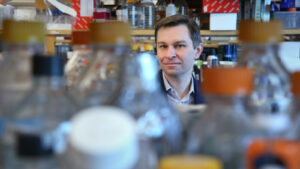The phrase “going to the dogs” usually means the business is failing. We hear some say our country is going to the dogs. Set that aside for the moment. This blog is about how a dog food and treat company is positioning itself in a competitive market. And this business is literally taking off: https://time.com/6981278/dog-airline-bark-air/ Watch their video too: https://cdn.shopify.com/videos/c/o/v/a95cdd43902142d386ac7ab32bc6e490.mp4
What was your reaction to all this. Did you just dismiss this as a crazy idea because it has so many obvious problems? Or, did you dig deeper to see why the idea has any traction at all? Did you get on their website to look at booking a flight? If you did, you would have seen that many of the upcoming dates are sold out even at $8,000 a ticket.
Did you take a closer look to see that this company does not own any aircraft nor employ staff to fly them? Did you figure out why this company created this business proposition in the first place to enhance the brand equity of their base business? Why didn’t you?
I could go on, but here is my basic point. Our mood toward opportunities has gone sour. Big companies define success as big ideas, not pandering to some elitist special interest group as this company appears to have done. Nobody seems to understand brand.
Yes, there are way too many business startups that are pie in the sky (sorry for the pun, but it is contextually accurate). We should be suspicious and dig deeper. But first and foremost we should be looking for the core business-value created and consequent brand loyalty.
A sad commentary on this for the energy utility companies is that General Electric started their brand awareness with Ronald Reagan as the pitch man saying we should live better electrically. GE got into the electric appliance business to give utilities things they could sell which in turn would build their business so GE could then sell them power plants. And, electric utilities did sell appliances directly to consumers. This virtuous circle came undone with all the nonsense about the future of energy, but it worked for decades. GE’s business has gone to the dogs as a result.
It is easy to dismiss new ideas, but that is the intellectually lazy approach. Think about the user perspective and what makes the idea attractive to them. Anyone who has a pet, especially a dog, considers them part of their family and honestly may be the only family member showing them unconditional love.
Flying is merely one dimension of togetherness. While this element has all kinds of wrinkles and stumbling points that come to mind, it is a window into a value proposition. Think of this as just one more type of concierge service. Yes, that sounds like an elitist business proposition … because it is. Does that bother you that some people spend more on their pets than you can imagine?
One of our friends acts as a concierge for Delta Airlines and his job is to act as the problem solver for pilots who may need all sorts of things that we everyday people do ourselves. We have other friends who cater to high-net-worth individuals taking care of their vacation homes all around the world.
It makes no sense to most of us. We just shake our heads in disbelief. I understand. What we tend to forget is that some people are looking for a premium offering and are willing to pay the price. Flying first class is part of the business, even if it is a small part.
Unfortunately, the model these days seems to be to drive the value through the pursuit of mediocrity at low prices. That is seldom a sustainable business model. No, worse than that, it is almost always unsustainable since somebody else can always offer a lower price.
Reread all the press releases about this company focused on a premium dog business. The flying portion may never be large, but it may prove to be a powerful differentiator.




